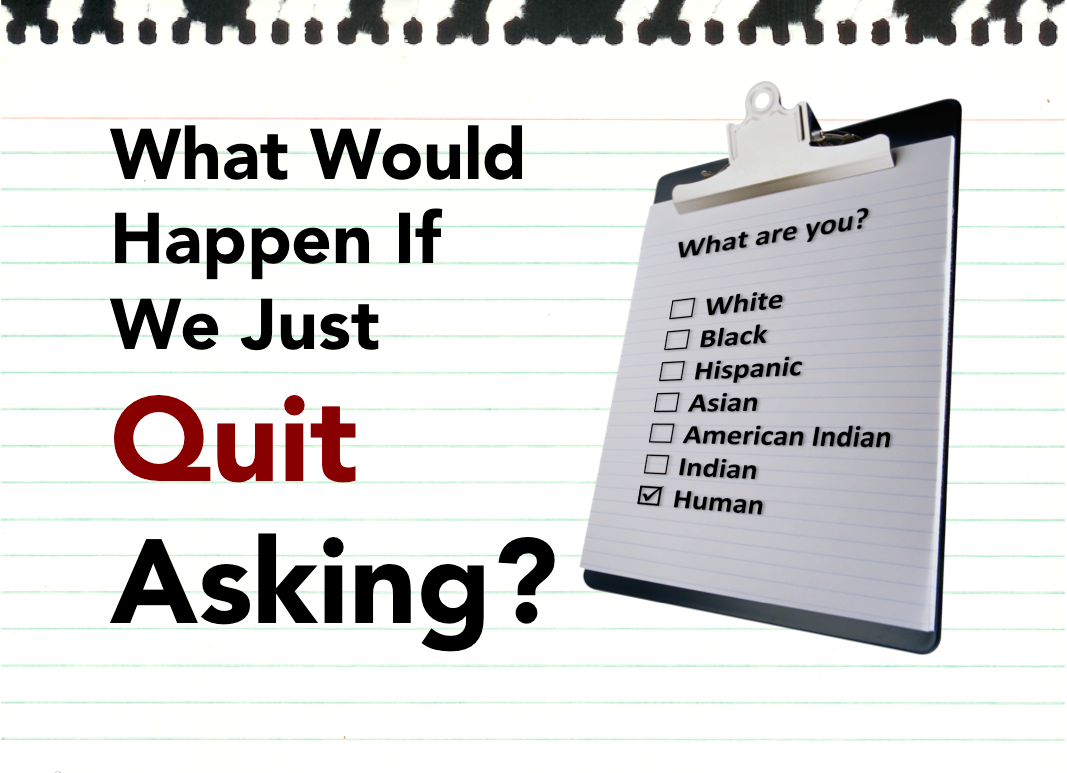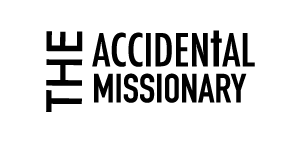What Would Happen If We Just Quit Asking?
/ “Remember! Take your time! It’s not a race!”
“Remember! Take your time! It’s not a race!”
I called out to my son as he headed off to school to take standardized tests last week. We had heard horror stories from other parents about how their kids were filled with anxiety over being assessed, curling up into crying balls on the floor. To prevent this problem, we didn’t talk about the exams at all, save for this one piece of advice.
Later that afternoon, Jake came bounding in, filled with energy.
“How was your test today, buddy?” I asked.
“Good,” he chirped.
I prodded, looking for more detail. “Just good?”
“Yeah. I’m white.”
“Huh?”
“The test says I’m white.”
“What do you mean?” I was confused, wondering if this was a new category on his color-coded behavior chart. Or maybe they had already received their test results and he was in the “white” range.
“Someone filled out the top part of the test for us. Ben was black. Arjun got Asian. I got white.”
He “got” white. Like they were handing out popsicles or something.
“But you’re not white.” I corrected. “You’re Asian-American.”
“Like Arjun?”
“No, he’s from India. Your mom is half Japanese.”
He quizzed me. “India and Japan are both Asia?”
“Yeah... I think?” Before he could test more of my geography knowledge, I added “You’re technically Japanese American.”
“But how can I be Japanese, Dad? You’re not Japanese.“ He paused for emphasis. “You’re like… pink!”
I wondered whether or not I should be offended. He continued his assessment, turning toward Audrey and saying,
“I bet I would be a lot darker if mom had married another Asian.”
To which my seven-year-old daughter replied,
“True. But I don’t think that’s going to happen.”
I wasn’t sure if I should laugh because it’s funny, or cry because it’s true. Here I was, a white dad, trying to explain the construct of race to my Asian-American kids, and they couldn’t care less about the subject. And all because of a pre-filled bubble on a standardized test. The whole episode had me wondering:
Why do we even ask the race question any more?
From an accountability standpoint, I understand why we need to know a person’s race. The Civil Rights Act was a beautiful piece of legislation. It was one of those rare times in our nation’s history when capitalism took a back seat to doing the right thing. Imagine if you owned a lunch counter in Mississippi in 1962. Serving “colored people” might hurt your business. So the Federal government thankfully stepped in and made it illegal to discriminate based on sex, race, color, religion, or national origin. And today, capturing demographic information helps us see if particular groups of people are being denied jobs, loans, or opportunities based on the color of their skin.
It’s an accountability thing. So we count.
But not very well.
Consider a recent leadership meeting my wife attended at our church. The team was reviewing the demographics of our congregation to see if we mirrored the community where we live. Gabby pointed to the document and noted,
“This says there are no Asians in our church.”
“That’s right,” someone offered.
She raised her hand, “Ummm… we should have at least one. Right?”
*insert awkward silence*
To be fair, my wife is like an optical illusion. She can look Asian, Hispanic, or Caucasian depending on whether we're eating at Pei Wei, El Chico, or Applebees.
Gabby filled the void by asking, “How do we determine this information? Do we just look at people and take a guess?”
That's when someone chimed in and said what everyone was thinking,
"We definitely shouldn't be guessing."
Again, laugh because it’s funny, and cry because it’s true. All of us adults are trying hard to get it right, but still making mistakes. There is a genuine intent to honor the experiences of others, and race plays a part. At the same time, I'm finding that my own kids seem to be oblivious to their own race, and we’ve told them dozens of times. It’s like they have racial amenesia or something. Or maybe they’re allergic to labels.
If so, they’re not the only ones.
In the most recent US Census, “Some Other Race” was the third largest racial category chosen. And it’s not for lack of options. The form allows people to select between White, Black, African American, Negro, Hispanic, Latino, Cuban, Puerto Rican, Spanish, American Indian, Alaska Native, Asian Indian, Japanese, Chinese, Korean, Guamanian, Samoan, Chamoro, Filipino, Hawaiian, or Pacific Islander.
Yet “Some Other Race” was number three.
This has the Census Bureau confounded. They are trying mightily to fix this problem to assure people accurately categorize themselves. They’re even working with the US Office of Management and Budget to adjust the “official” race categories. I know it’s silly to imagine, but yes, there are people whose job it is to determine what races are “official” in America. And it’s rather arbitrary, like trying to determine how many squares a roll of toilet paper should have, or what name to give the latest nail polish color at the Clinique counter. Looking at a brief history of how these decisions were made in the past, I was simultaneously amused, confused, and outraged.
The funny thing is, we’ve been doing all of this counting, since 1790, and every decade the number of boxes grows ever larger, with no end in sight. In fact, Census Bureau is testing a question for the 2020 form that adds a space beneath each racial and ethnic category so each person can write in his or her own description.
Yes. A fill-in-the-blank census.
As crazy as it sounds, it is probably the most accurate measure we could have. While it’s human nature to want to put people into boxes to make sense of the world, humans themselves resist being placed into boxes. I’m not sure why this is. Maybe it’s because our egos don’t like being pigeon-holed. Or maybe it’s because the Constitution says that we’re all created equal, and labeling groups of people only encourages stereotyping and generalizations.
Or maybe it’s because God never intended it to be that way.
I know I am a naïve idealist given the current state of race relations in our country, but I believe there’s some truth in the words of Roger Rosenblatt, who, at the turn of the millennium wrote this in his Letter To The Year 2100,
“U.S. immigration officials recently predicted that by 2050 (50 years ago for you), nearly half the country's population will be nonwhite. There are more interracial marriages every year. I like to picture you all as a nice, rich shade of beige.”
It sounds nice, doesn’t it? Rosenblatt is on to something here. Maybe the solution to our problems isn’t ever more boxes to check on a census form, church register, or standardized test. Maybe what we’re truly after is something completely different. Think about it…
If we no longer asked the question, would division no longer matter?
It’s worth considering. And worth an investment of prayer and hope. That Rosenblatt’s words would somehow come true. All of us checking a single box. The human race. Created equal and treated as such. Seven billion unique expressions of the image of God.
Loving each other into oneness.
* Enjoy this post? For more, just preorder Scott's book about his family's Year Without A Purchase on Barnes & Noble or Amazon launching August 4th from WJK Press. And, to see more posts like this, submit your email at the upper right to receive new blogs hot n fresh to your inbox. Or, Like us on Facebook. Cheers!
